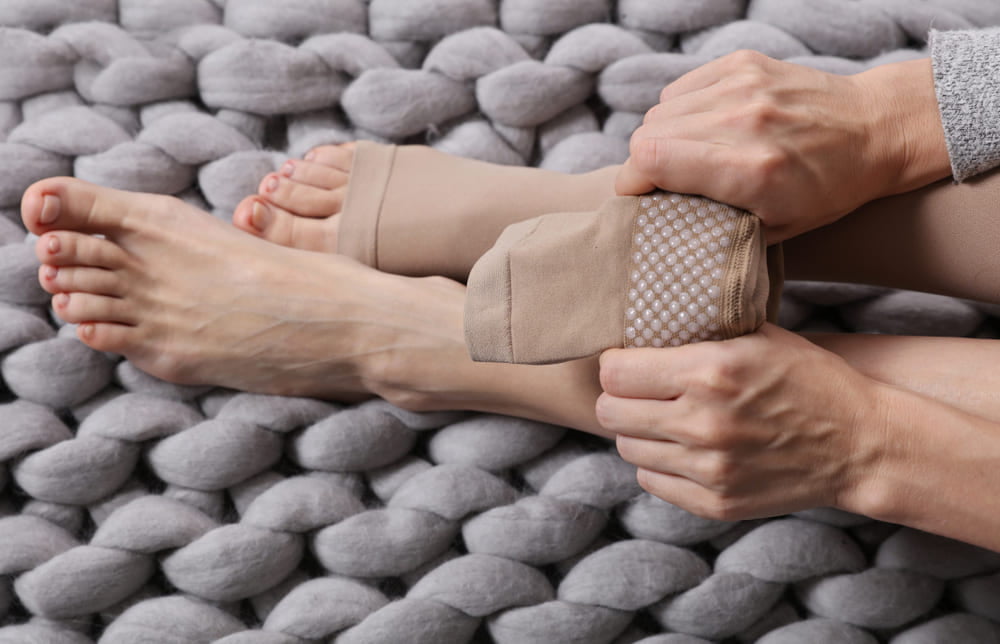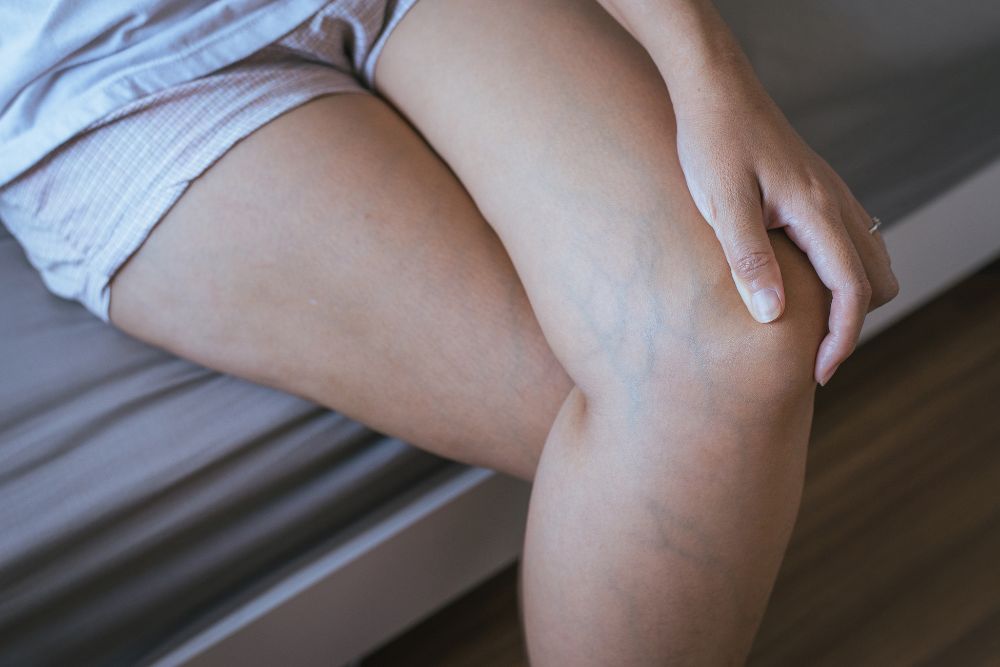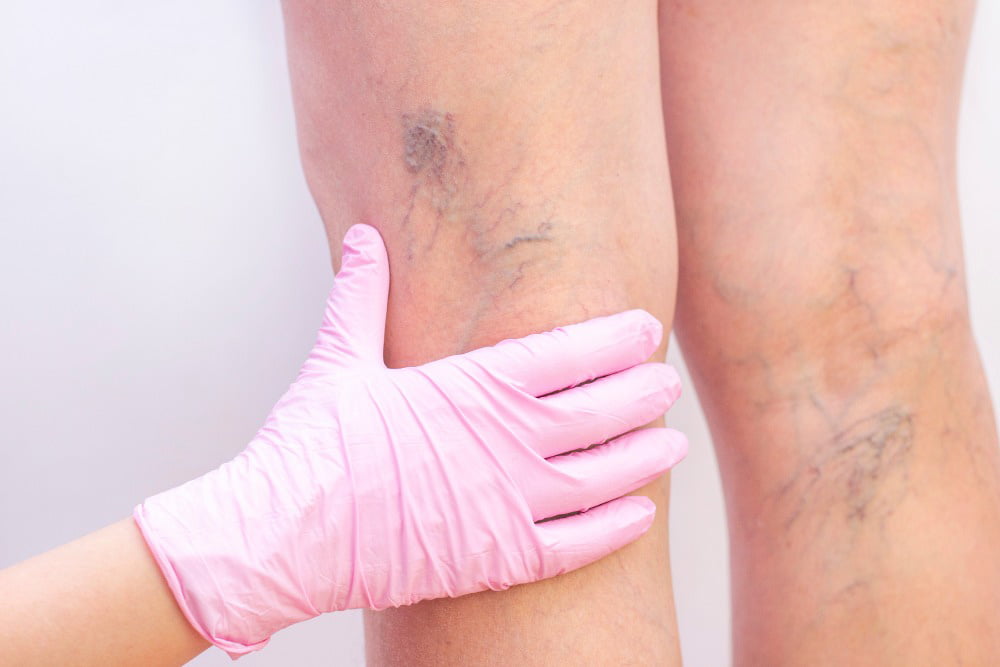What Are Spider Veins
Similar to varicose veins, spider veins are slightly enlarged veins that appear either blue or red. They are close to the surface of the skin and often form a web or branching pattern with short jagged lines. They commonly occur on the legs and face and can cover either a small or large area of the body.
What Causes Spider Veins?
Spider veins appear when valves inside veins become weak or damaged. When these valves aren’t working properly, blood can flow backward as it tries to move up the body. This is because veins in the legs push blood back up to the heart, working against the force of gravity.
If any blood were to flow backward, a properly working valve would stop the blood from getting too far. In the case of a weak valve, however, blood can leak back into the vein and collect (a condition called venous insufficiency). When this happens, the veins can become discolored and enlarged.
Risk Factors for Spider Veins
Spider veins can be brought on by a number of different factors.
- Age. The valves in your veins tend to become weaker the older you get.
- Hereditary. Some people are simply born with weaker valves. Those with a family history of venous insufficiency are more likely to develop it themselves. About half of all people with spider veins have a family member who also had it.
- Hormone changes. Pregnancy, menopause, and other times of hormonal changes may contribute to the forming of spider veins.
- Obesity. Being overweight can put extra pressure on your veins, causing them to have to work harder. The increased stress can lead to valve damage.
- Lack of movement. Prolonged sitting or standing can force your veins to work harder, increasing your risk of developing spider veins.
- Sun exposure. Too much sun can lead cause spider veins forming on the cheeks or nose.
Symptoms of Spider Veins
While spider veins are usually nothing more than a cosmetic issue, other symptoms include:
- Itching
- Mild burning
- Aching
- Swelling
- Heaviness
- Throbbing or cramping
- Restless leg
In rare cases, spider veins can be a sign of blood backup in deeper parts of the body. These backups can then lead to ulcers, bleeding, and blood clots.
How to Prevent Spider Veins
While spider veins are not always preventable, there are things you can do to reduce your chances of developing them.
- Wear sunscreen
- Exercise regularly
- Control your weight
- Try not to sit or stand for long stretches of time. Shifting your weight from one leg to another can help while standing. Take short breaks to walk around if you need to sit for long periods of time.
- Wear support stockings
Spider Vein Treatment
Luckily, spider veins are very treatable. To learn how The Vein Company treats spider veins, view our


